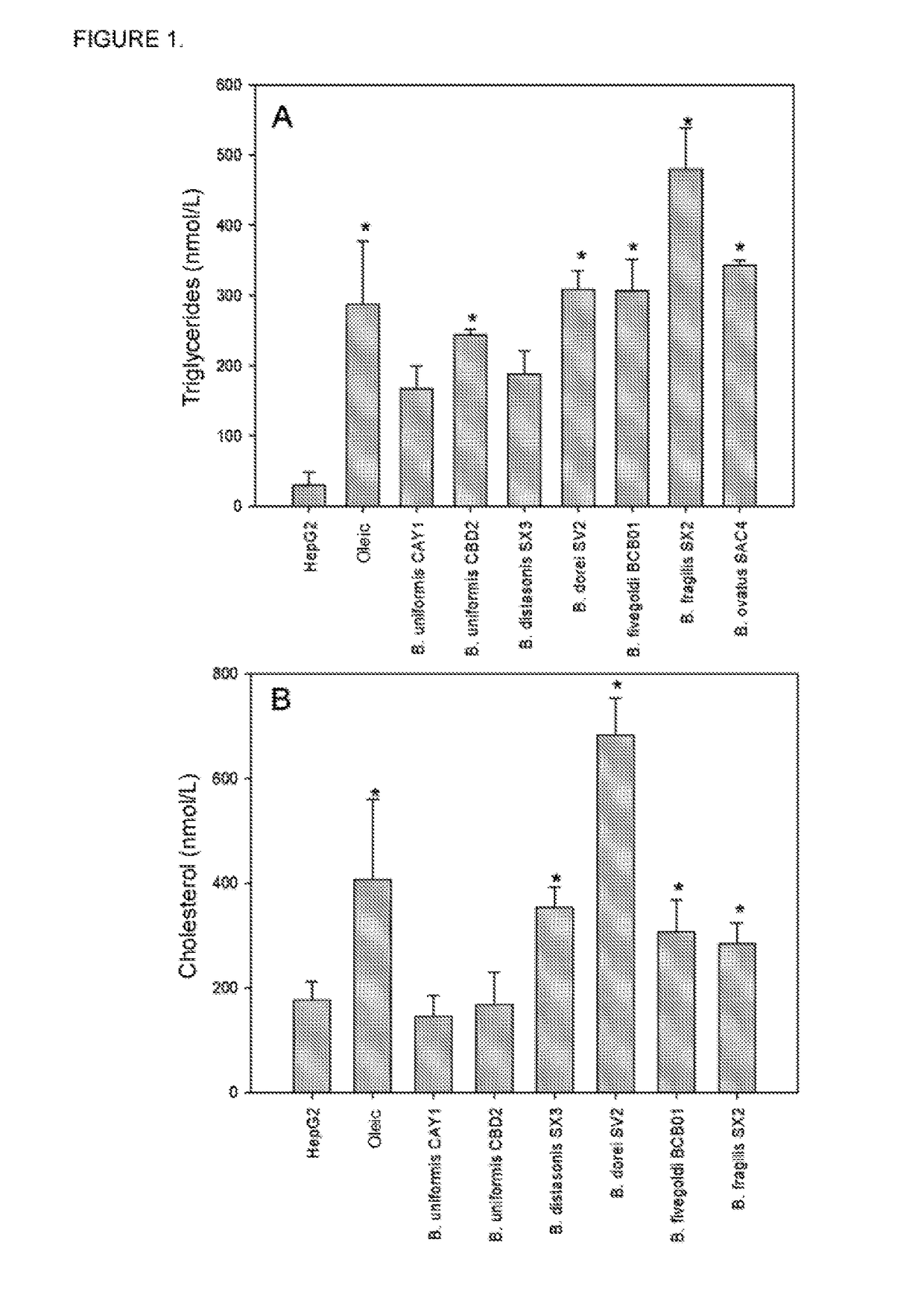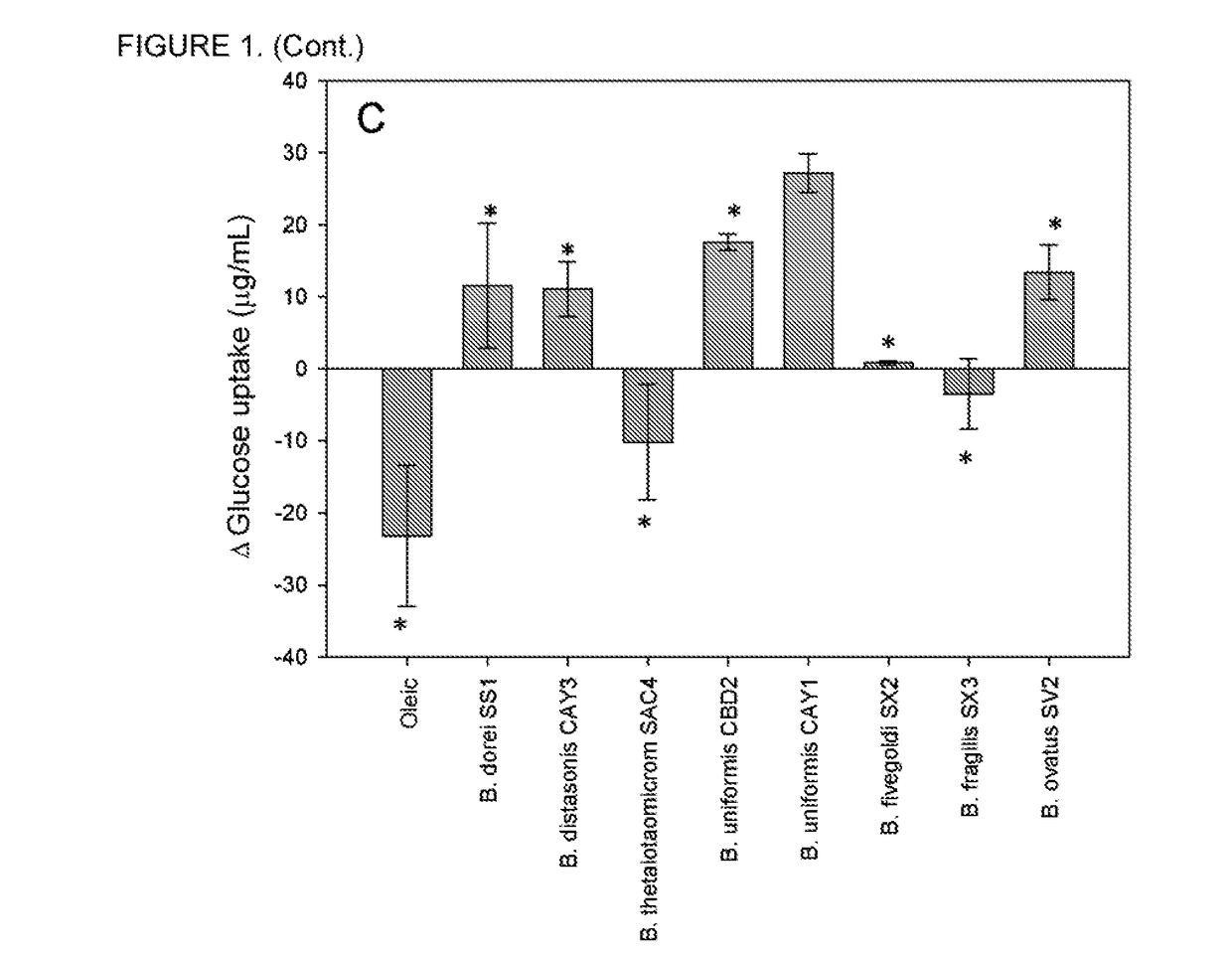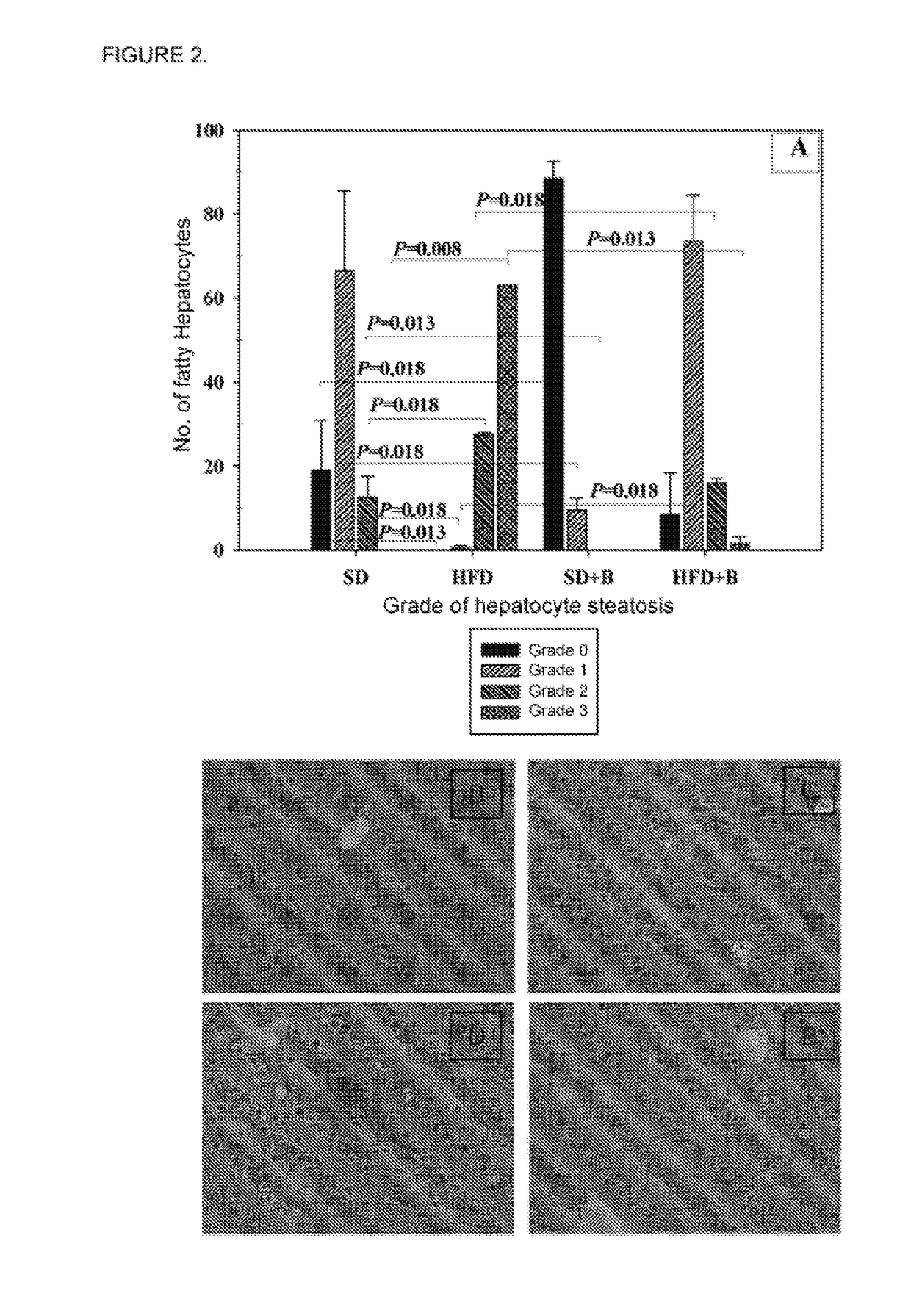Bacteroides CECT 7771 and the Use Thereof in the Prevention and Treatment of Excess Weight, Obesity and Metabolic and Immunological Alterations
- Summary
- Abstract
- Description
- Claims
- Application Information
AI Technical Summary
Benefits of technology
Problems solved by technology
Method used
Image
Examples
example 1
Isolation and Identification of the B. uniformis CECT 7771 Strain.
[0132]We proceeded to the isolation of strains of the genus Bacteroides from faeces of healthy infants who had not been subjected to treatments with antibiotics for at least the month prior to sampling. The samples were kept at 4° C. and analysed within two hours after collection. Two grammes of each were diluted in 10 mM phosphate buffer containing a concentration of 130 mM NaCl (PBS) and homogenised in a Stomacher 400 Lab Blender (Seward Medical, London, UK) for 3 minutes and were diluted in peptone water. Aliquots of 0.1 ml of various decimal dilutions were inoculated onto Schaedler agar (Scharlau, Barcelona, Spain) supplemented with kanamycin (100 mg / L), vancomycin (7.5 mg / L) and vitamin K (0.5 mg / L), at 37° C. under anaerobic conditions. After incubation for 48 h at 37° C. under anaerobic conditions (AnaeroGen, Oxoid, UK), isolated colonies were selected and their morphology was confirmed under Gram staining. The...
example 2
Selection of the B. uniformis CECT 7771 Strain in Accordance With its Capability to Modulate, In Vitro, the Macrophage Response Related to Chronic Low-Grade Inflammation Associated With Obesity and Acccording to the Ability to Modify Lipid Accumulation and use of Glucose By Hepatocytes
2.1. Evaluation of the Effect of Bacterial Strains on Macrophages
[0136]Bacterial strains and culture conditions. The following strains of the genus Bacteroides were used: B. uniformis CAY1 (CECT 7771), B. uniformis CBD2, B. distasonis CAY3, B. fragilis SX3, B. fivegoldi SX2, B. dorei SS1, B. ovatus SV2, B. thetaiotaomicron SAC4 and B. caccae SV3. The strains were inoculated into 10 ml of Brain Heart broth (BH; Schartau Chemie S.A., Barcelona, Spain) containing 0.05% cysteine (BH), at 1% with 24 hours of culture were incubated for 22 h at 37° C. in anaerobiosis. (AnaeroGen; Oxoid, Basingstoke, UK). The cells were collected by centrifugation (6,000 g, 15 minutes), washed twice in PBS (10 mM sodium phosph...
example 3
Effect of Administration of the B. uniformis CECT 7771 Strain on Biometric and Bionchemical Parameters, Absorption of Lipids in the Intestine and Histology of Adipose Tissue and Liver
3.1. Animal Model of Obesity and Sampling.
[0145]Adult male C57BL-6 mice (6-8 weeks; Harlan Laboratorios) were used. The animals were kept under controlled temperature (23° C.), with a 12 hour light / dark cycle in an atmosphere with 40%-50% relative humidity.
[0146]Obesity was induced by feeding the mice a high-fat diet (HFD) which provided 60% of energy in the form of lipids (60 / Fat, Harlan Laboratorios) at the expense of a reduction in carbohydrates, for 7 weeks, while the non-obese mice were fed a conventional diet that provided 12.4% of energy as lipids. The mice had free access to water and diet. Weight was monitored weekly. The experiments were conducted in accordance with the rules of the Animal Ethics Committee.
[0147]The animals were randomly divided into four groups (n=6 / group): (1) controls that ...
PUM
 Login to View More
Login to View More Abstract
Description
Claims
Application Information
 Login to View More
Login to View More - R&D
- Intellectual Property
- Life Sciences
- Materials
- Tech Scout
- Unparalleled Data Quality
- Higher Quality Content
- 60% Fewer Hallucinations
Browse by: Latest US Patents, China's latest patents, Technical Efficacy Thesaurus, Application Domain, Technology Topic, Popular Technical Reports.
© 2025 PatSnap. All rights reserved.Legal|Privacy policy|Modern Slavery Act Transparency Statement|Sitemap|About US| Contact US: help@patsnap.com



